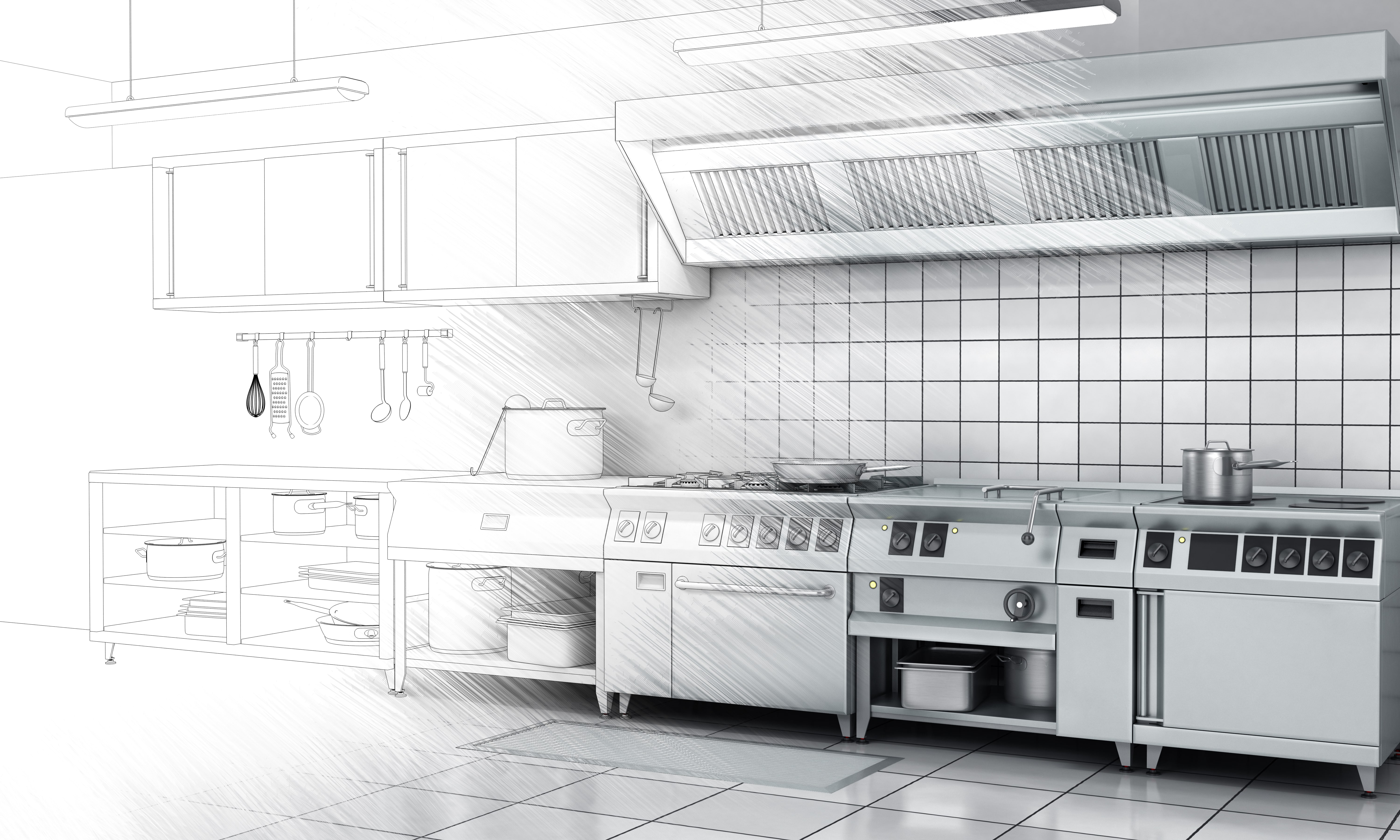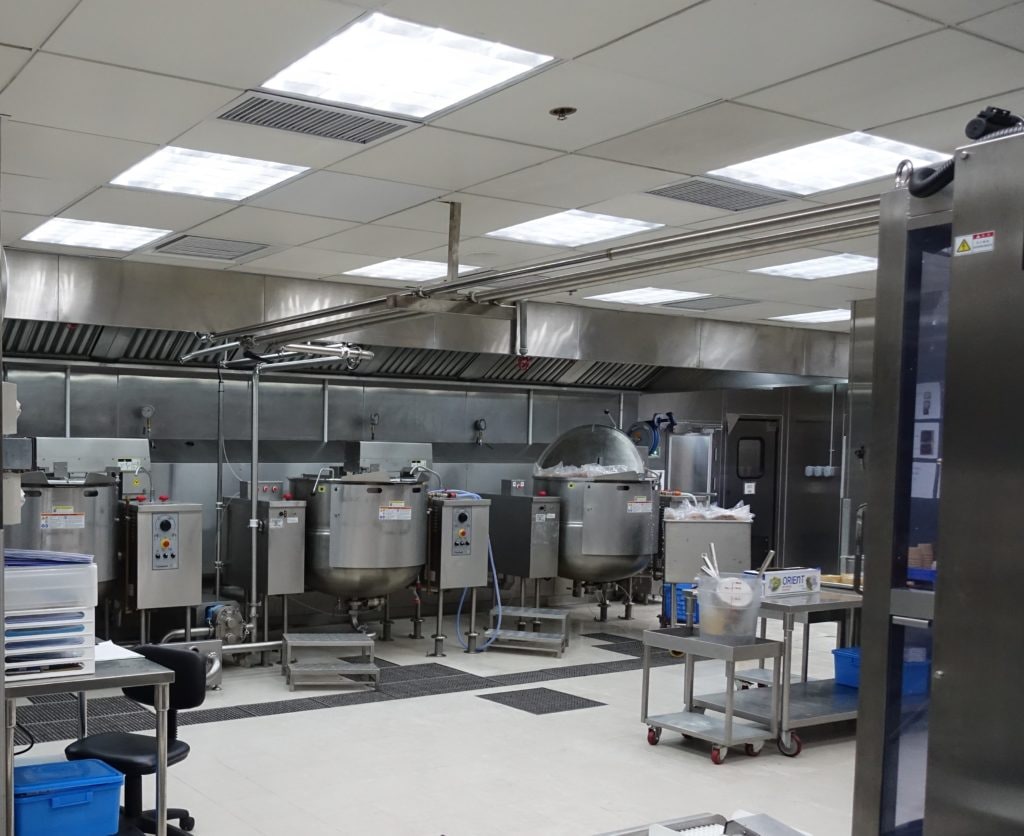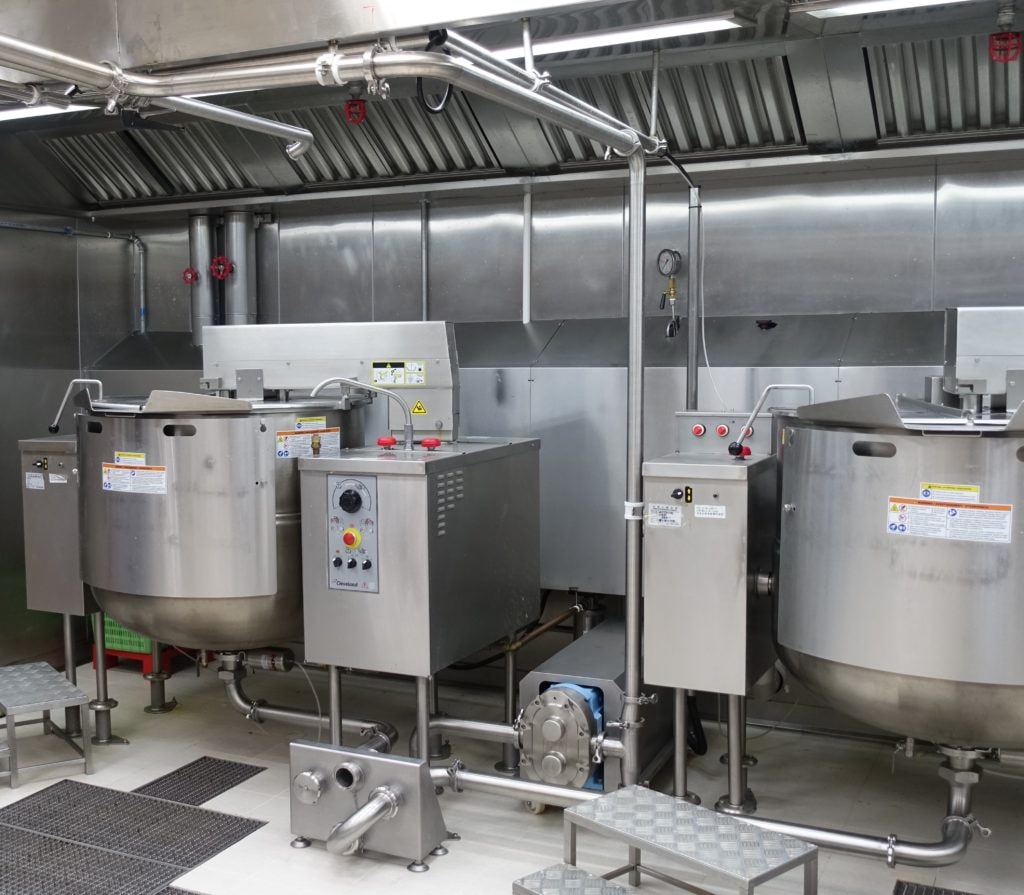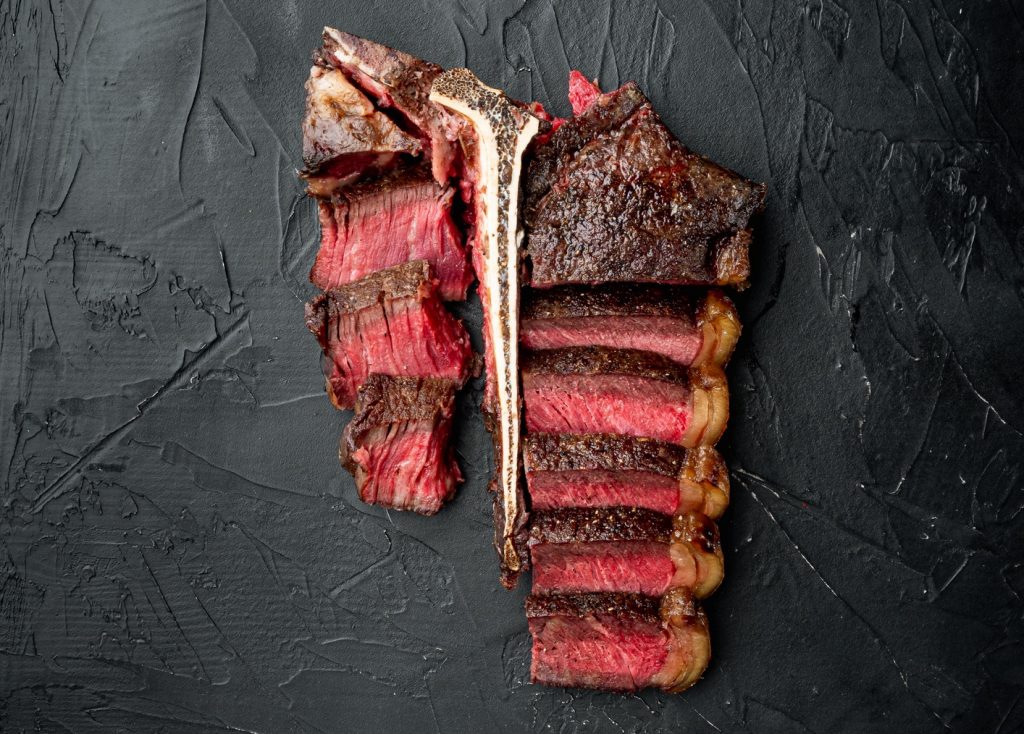
“Patience is what is needed to see through any process of production” – Sunday Adelaja, journalist, author
Over the last 12 months many restaurant operators have discovered the advantages of take-out meals. Dark kitchens have proliferated as one consequence, but another is the kitchen now having to produce their most popular items in batches to meet demand from a cut down menu offering that suits take-out. To maximise the efficiency and return, meals are now prepared in batches that are portioned and chilled or vacuumed for safe storage. The struggling restaurant kitchen has become a viable small batch production kitchen.
The menu offer is reduced to those items that can be produced efficiently in such a way as to maintain the reason for their popularity by customers who now have them delivered home where they may be eaten immediately or held for later. The chef will have experimented with the ingredients, cooking process and time to make the adjustment from single portions to batch quantities. Menu item that can be most easily scaled up for batch production and sale for future consumption are generally those that are finished in a stock pot or saucier. Scaled up batches are then tested and held for a period before reheating them in a domestic situation: all to make sure the customer experience is maintained.
This raises an issue that the operator had not needed to consider previously, they are no longer in control of the food being consumed in the same way as when the meal was eaten in the restaurant the safety of which could be managed “from farm to fork”. Now the HACCP plan is “from farm to kitchen door”. The food safety of a single serve is much easier to manage than even limited production batches. But provided the process is well planned for, all risks (including potential for contamination) the production should be able to be scaled up.
The 10X rule: how do you grow?
Deciding how much to scale up production from manually stirring a 20 litre (5 gallon) stock pot on the stove to a production kettle is a significant decision. An approach commonly used in the food processing industry is called the “10X Rule”. This states that production capacity can be successfully increased by as much as ten times more than the current equipment capacity.
While this rule is effective as a general equipment design and configuration guideline, for processing larger quantities in a larger kettle, it is not a guarantee that the results will be consistent with those from the smaller batch production when applied to every type of food being produced. The 10X Rule must be carefully tested to make sure that the result is consistent with the original popular item. Because results can be so variable, it can be an advantage to work with a supplier who can provide test kitchen facilities to verify the scalability of your product whilst maintaining the quality in a production kettle.
Which kettle is right?
When moving from the stove top to dedicated production equipment that will be running all day means that the equipment will be required to operate unattended and be robust enough to maintain continuous use to maximise the benefit. Applying the 10X rule, the 20-litre stock pot will become a 200-litre kettle that is fitted with integral paddles or agitators that replace stirring by hand.
 In cases where the product incorporates chunky items that could be easily crushed, as well as to maintain the “restaurant style” outcome, rather than a single large kettle, two 100-litre kettles might be better used to deliver a more controllable and consistent outcome. Multiple kettles will also provide flexibility as well as redundancy in case of a breakdown or for maintenance.
In cases where the product incorporates chunky items that could be easily crushed, as well as to maintain the “restaurant style” outcome, rather than a single large kettle, two 100-litre kettles might be better used to deliver a more controllable and consistent outcome. Multiple kettles will also provide flexibility as well as redundancy in case of a breakdown or for maintenance.
A variety of stirring or agitating actions for the item being cooked are possible. The basic stirring mechanism is a single motion agitator using scrapers with the option of separate shear blades for blending low viscosity liquid items. More complex double motion agitators which move in opposite directions are better at ensuring higher viscosity items are fully mixed from top to bottom. Most of these agitators are mounted on a motor driven shaft within the kettle that can be removed for cleaning.
If highly viscous items such as meat mixes, vegetables and fruit type products are being cooked, a better solution can be an inclined agitator that will provide a gentle lifting and folding action that virtually eliminates the risk of damage to freshly cut ingredients that must remain intact through the cooking process as well as maintaining consistency throughout the batch.
Heating the kettle
All these kettles will be indirectly heated via a jacket around the outside of the cooking vessel to eliminate the risk of burning that is common with the direct heating of a stove top stock pot. The jacket will be heated by steam which is generated using electricity or gas as part of the equipment or is directly connected to steam from an external source of supply.
Kettles up to 500 litres capacity can be available self-contained with an integral electric steam generator. Because of the simple installation, requiring only an electric supply and water this will generally be the first choice for those moving from single portion to production in the kitchen. However, once the number or capacity of the production requires multiple kettles, then it will be far more energy efficient to use steam from a separate gas or electrically heated generator.
The temperature of the internal “cooking” surface of the kettle will depend on the pressure of the steam in the jacket: at 170kpi (25psi); the temperature could be 1300C (3700F). The temperature is adjusted by regulating the pressure either by a scaled or temperature graded control. It is worth considering kettles which have controls that enable the programming of the cooking process to vary the temperature, agitation through the process automatically to ensure that that every batch will have the same cooking method. Generally, these kettles will have a full height jacket which means that the heated surface is the full height of the capacity of the kettle. Kettles with 2/3 jackets which stop down from the top avoid the rim of the kettle becoming a safety issue and enabling an efficient pouring spout. However, the latest design of kettles with full height jackets are insulated for both efficiency and safety and the pouring spout design will control the discharge flow.
Getting the food out of the kettle
The food is cooked, and the temperature has dropped to maintenance. For small batches the food can be poured into individual containers for measuring into portions. However, the labour involved in manually handling a considerable number of portions (100lt kettle/±600 portions) means that it is generally cost effective to invest in an automated process that pumps the food from the kettle to a portioning station which fills, weighs and seals the meal into the final container. In this case the kettle has to be fitted with a draw off valve (tap) which needs to be large enough to allow the largest protein or vegetable pieces in the meal to pass through. A hose is connected to the spout to connect to a pump and portioning station.
Kettles are available as stationary fixed units or tilting. A stationary kettle is satisfactory for pumping through a valve at the very bottom of the kettle, but if the valve is on the lower face of the kettle, being able to tilt it can ensure all the contents can be pumped out. A tilting kettle can also enable flexibility in the type of food to be cooked as well as making it easier to clean. However tilting kettles require more space than stationary ones depending on the hinge point. This can be at the top of the kettle, which makes it easier to pour accurately but extends out the rear when being tilted or somewhere halfway up the body of the kettle which is harder to pour accurately but does not extend to the rear as much. Because of the weight of product, kettles over 50 litres capacity will have a power operated tilt mechanism which has to enable a very gradual and smooth tilting process to avoid spillage and enable the flow to be controlled accurately.
Completing the process
There will be many other features offered for kettles that can assist the efficiency and consistency of the production process. These may include water dosing for automatically measuring the water into the kettle and load cell weighing of ingredients into the kettle. However many of these features can be added later so it’s better to get the basics right before adding features that may not be essential to Efficiency and Consistency which are the two key features required for the successful scaling up cooking from portions to production.
Tim Smallwood FFCSI
Pictured: Cleveland kettles being used in a production application connected to pumps




